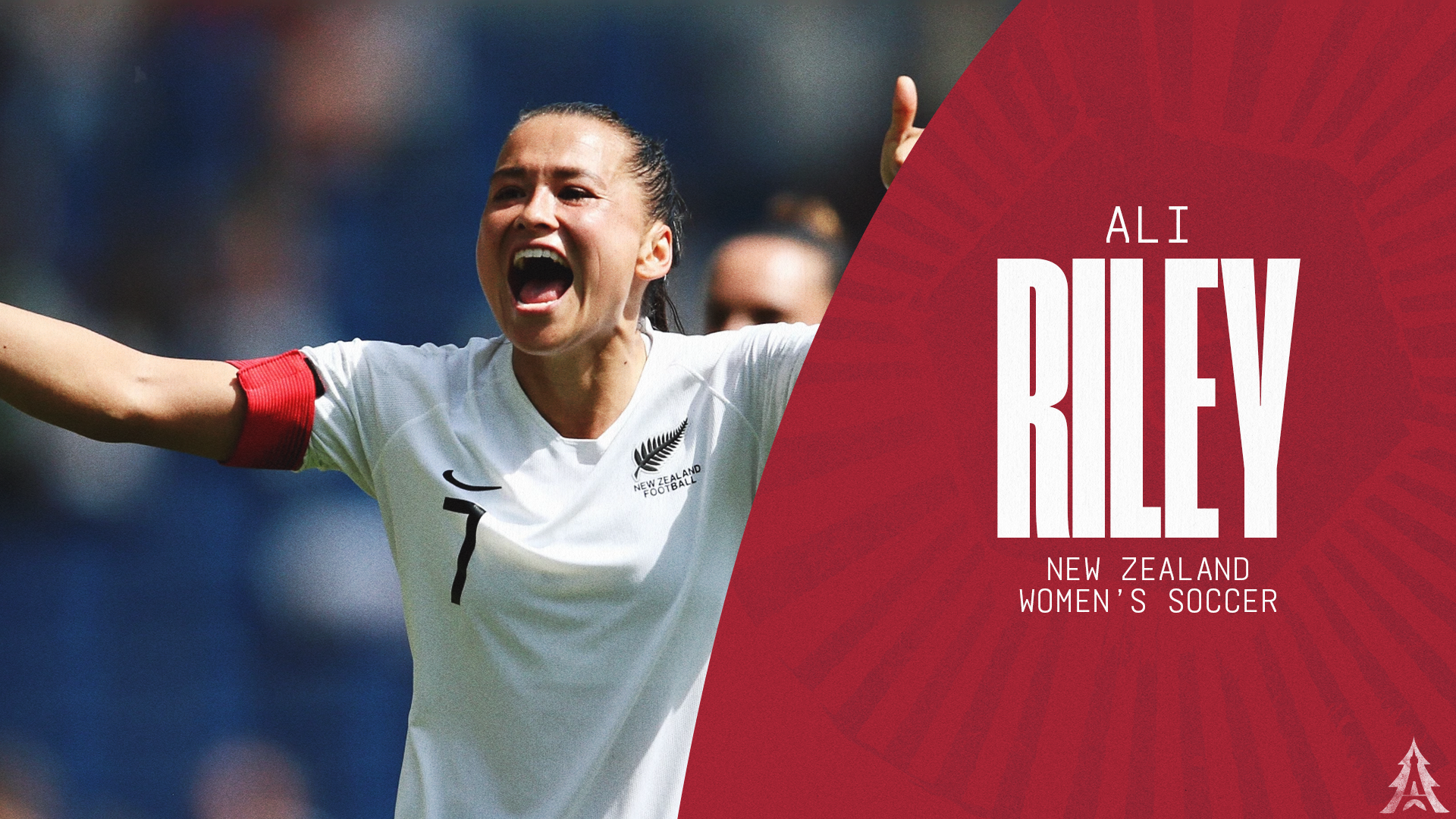
‘Mana’ has many meanings in the Maori culture of New Zealand.
“It is a source of both personal and collective strength, pride and identity,” New Zealand Geographic writes. “Mishandled, it becomes the bearer of shame, ridicule and embarrassment. If mana allows us to walk tall, then it also casts a long shadow — humility.”
To Ali Riley, captain of the New Zealand women’s soccer team, the Football Ferns, since 2017 and playing in her fifth Olympic Games, mana is what influences her every move.
“We’re only here for such a short time … the sun shines on us for such a short time,” she said.“ What can you do in that time? I want to make things better when the sun shines on people who come after me.”
The hot sun was shining on the Rose Bowl for the 1999 Women’s World Cup final when Ali, among the 90,000 in attendance, felt the tug of the game as the U.S. pulled out a dramatic penalty-kick victory in a seminal match that raised the bar for women’s sports around the world.
Ali was born in Los Angeles to a Pakeha (white New Zealander) father, John Riley, an economics professor at UCLA, and Chinese-American mother Bev Lowe. Ali traveled often to New Zealand while growing up, visiting her grandparents in Christchurch, playing in their beautiful garden and Boogie Boarding with her grandmother.
By the time Ali had graduated from high school, both had passed and Ali was afraid that without them, she might lose her connection to the country and her heritage.
Fortunately, soccer, which brought her to Stanford, allowed her to continue that connection. She was a forward when she came to Stanford and felt lucky about the opportunity.
“I wasn’t a top recruit,” she said. “And there was not much scholarship money left. But Paul Ratcliffe (Stanford’s Knowles Family Director of Women’s Soccer) believed in me. He told me, ‘If you work hard, your career can look however you want it to look.’”
As a junior, Riley switched to attacking fullback, creating a prototype for a position that’s
become a staple of the program and has helped the Cardinal to three NCAA championships.
“I essentially became left-footed, and a fullback,” Riley said. “All of these things that have shaped my career have come from Stanford.”
When the Rileys discovered that New Zealand was creating an under-20 women’s national team, they sent a DVD to the federation and Riley was selected in 2006. A year later, she made her senior national team debut and has been a fixture there, and even the face of the Football Ferns, ever since. Including Olympics and World Cups, this will be her ninth global championship tournament.
“Every time we stand there and sing the national anthem is incredible,” said Riley, in a video called My Ferns Story. “It never ever gets old. I’ll never get used to it. I’ll never take it for granted. This team is my family and has been for 17 years.”
That is mana.
“In Māori terms, your mana comes down to how well you care for your family, subtribe, tribe and
canoe. Ultimately, other people,” wrote Chris Winitana in New Zealand Geographic.
“What am I doing by being a captain, and creating history, and playing at World Cups?” Riley wondered. “I grow my mana. But what am I going to do with that? I think about staying humble, working hard, and making a huge impact on others. But it’s also about respecting your environment, respecting other cultures, honoring the spaces that you go in, being respectful.”
Riley, 36 and now in her 15th pro season and playing for her hometown club (Angel City FC in the National Women’s Soccer League), has not made any retirement plans. However, she admitted, “I’m pretty sure this is my last major tournament.”
She’s seen growth in women’s soccer: the first women’s-owned franchise, women’s soccer-specific stadium, women’s soccer-specific training facilities. Pro leagues are popping up throughout Europe and more matches are televised.
“There’s a collective shift in culture – women athletes are much more respected,” she said. “Women’s soccer is no longer viewed as just a charity, but a valuable investment and business opportunity. And now you’re seeing record-breaking transfer fees and some huge salaries.
“But the majority of players are not at that level. Most professional women’s players cannot make a living, even in the NWSL. We have a really long way to go.”
When Riley does retire from the national team, she’s determined to find ways to grow the game in New Zealand. To give back.
“I definitely want to keep this connection to the country and to the young girls,” Riley said. “There is such a potential to build soccer in New Zealand. I want every young girl there to feel like they have an opportunity to do something great and do something that they love. I want to contribute in any way I can.”
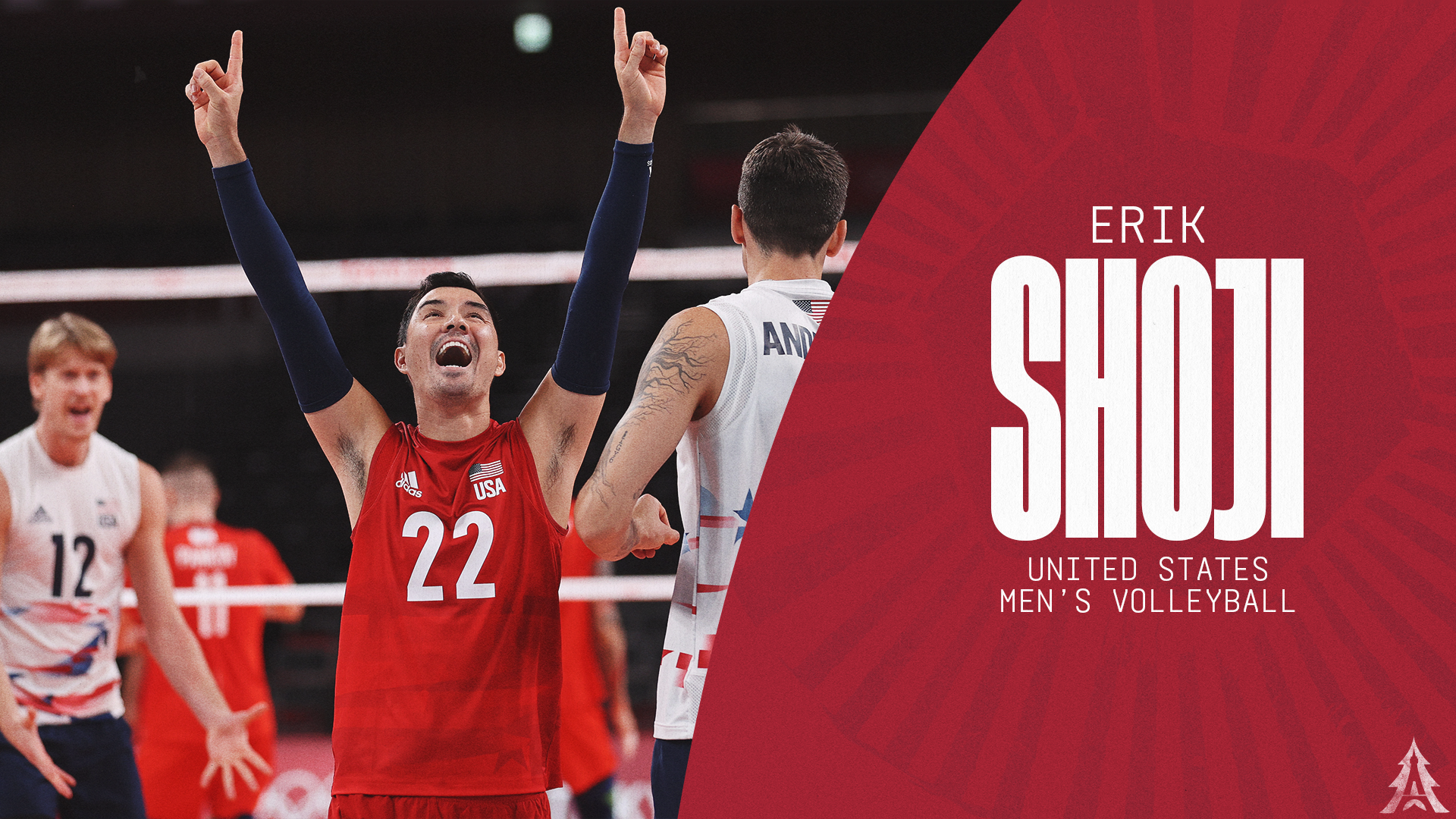
Erik Shoji enters his third Olympic Games as one of the world’s great liberos. Shoji redefined the defensive specialist position not only at Stanford, where he became the first in collegiate history to earn four AVCA first-team All-America honors, but internationally as well.
Fourteen years after he and brother Kawika led Stanford to a sweep of Penn State in a packed and boisterous Maples Pavilion to win the 2010 NCAA men’s volleyball title, Shoji is a 34-year-old veteran playing in Poland and determined to help the U.S. to a medal in Paris, perhaps even gold.
“We’re a medal contender, no doubt,” Shoji said. “And our goal is gold. We’re a tough group and we have a lot of experience. We just need to get out of the quarters and grind it out from there.”
At Stanford, Shoji arrived to find himself among a familiar and talented core group from his home state of Hawaii. The team improved rapidly over a short period of years, following a rallying cry of “Worst to First” coined by assistant coach Al Roderigues, who died of stomach cancer shortly after Stanford reached a No. 1 ranking midway through its championship season.
“Two things come to mind when I think of Stanford’s role in my journey,” said Shoji, who continues to hold NCAA rally-scoring-era records for career digs (1,402) and career digs per set (3.16). “The first is just the word ‘excellence.’ Stanford is excellent at so many things. As a student and as an athlete, you want to live up to those standards. So, you figure out how to get as close to excellence as you can.
“That’s something I’ve been striving for ever since, on the national team and as an Olympian, and something that I’ve worked for every day in my life.
“The second thing is, just learning how to prosper, learning different habits, scheduling, priorities. I had to figure that out real fast as a freshman, and that applies to life overseas and life here with the national team – just figuring out my way to survive and succeed on and off the court. I definitely learned those things from Stanford and they continue to apply to my life now.”
Shoji won an Olympic bronze in Rio de Janeiro in 2016 and has scaled to the top of European pro volleyball while playing 12 pro seasons in five countries, including a stretch of three years in Siberia, where it’s so cold Shoji tossed water into the air just to see it turn to snow before it hit the ground.
But Shoji, perhaps better than others, has a fuller perspective of what it means to wear a U.S. uniform because of his family history. His paternal grandparents were Japanese-Americans imprisoned in internment camps after the bombing of Pearl Harbor. His grandmother and grandfather’s families, from different towns in San Bernardino County, lost everything.
The silver lining was that Kobe and Chizuko Shoji met in the Poston, Arizona, camp and were married there before Kobe enlisted and, as part of the 442nd Infantry Regiment made up entirely of soldiers of Japanese descent, earned a Purple Heart and Bronze Star for his efforts in action.
“My grandparents went through a lot of tough things in their lives,” Shoji said. “But they never brought it up to us. I think that’s so brave and amazing of them, that we never sensed even a little bit of anger or animosity. Looking back, I don’t think as a 10-year-old I could comprehend that, and even when I first joined the U.S. national team, I didn’t quite understand what I was representing.
“But now, in times of turmoil that we’re going through, I’m just trying to represent the good parts of this country and showcase that we have good people, who work hard and compete at the same time. That means a lot to me.”
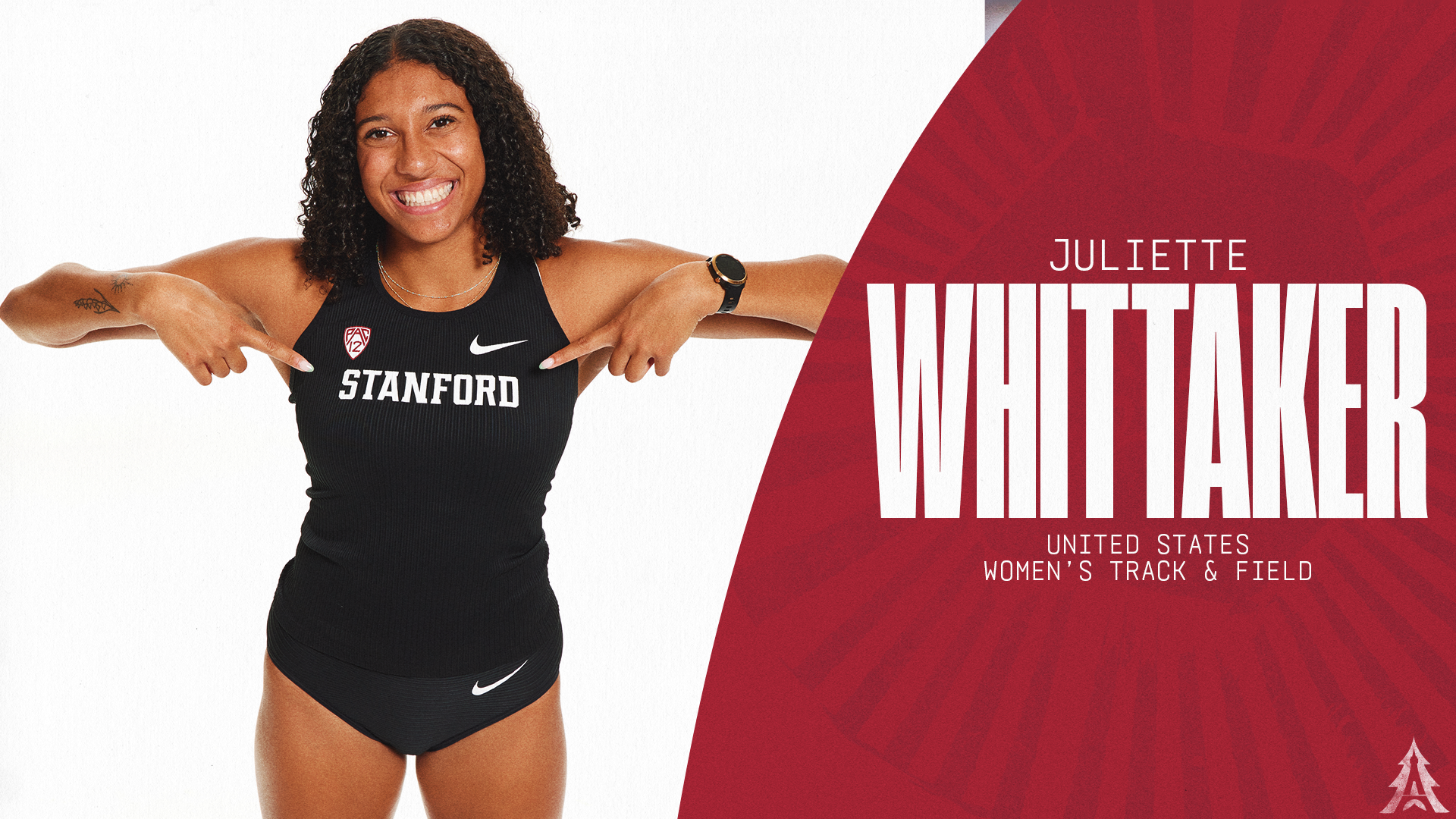
For a year, Juliette Whittaker lived with a fall near the finish line of the 800-meter semifinals at the U.S. Outdoor Track and Field Championships, ending her attempt to make the U.S. team for the 2023 World Championships.
The fall had no effect on the perception of Whittaker, already a three-time NCAA champion through only her sophomore year at Stanford. In 2024, she became the first woman to sweep the NCAA indoor and outdoor 800 titles in the same year since 2017 and has won the most NCAA track and field titles by a Stanford athlete since triple jumper Erica McLain ’08.
What the fall did, more than anything, was provide some extra motivation. Whittaker knew she could make an impact on a national stage. She just had to show it.
At the 2024 U.S. Olympic Trials in Eugene, Whittaker, 20, kept a low profile. She just wanted to advance a round or two, she said. But Whittaker kept her real goal to herself -- an Olympic berth.
As an age-group swimmer, she watched all the Olympic sports on television and imagined being on the other side of the screen, in the pool. As a record-setting high school runner, Whittaker often was sought by fans who might say, half-jokingly, “I need to get your autograph before you become an Olympian.”
Whittaker would laugh.
“Yeah, sure,” she would say with a smile.
That goal took on greater clarity in the past year, especially with the shape she was in and the confidence she had in herself. In the weeks before the Trials, “It felt a lot more realistic than it ever had before,” she said.
J.J. Clark, Stanford’s Franklin P. Johnson Director of Track and Field and Cross Country, has coached runners to the Olympics in the past, including two sisters and his wife. The U.S. women’s middle distance assistant coach at the 2008 Beijing Olympics, Clark knows the game.
In the weeks leading up to the Olympic Trials, Clark made it clear to Whittaker that she was capable.
“I’m not one to verbally express my goals to other people,” she said. “It feels a lot more scary. What if I don’t get it? But I feel like in the past month, Coach would pull me aside and say, ‘You really could be an Olympian. You can do it. You can make this team.’
“When he’s talking about the Olympics, something so big, it sounded very casual and nonchalant, and that helped it not be such a scary and lofty goal.”
The Trials final didn’t play out as many expected. A fall by Athing Mu on the first lap took the reigning Olympic champion out of contention and affected Raevyn Rogers, who kept her feet but lost her spot in the front pack. Whittaker avoided trouble, stayed in a good spot and never got boxed in.
Coming off the final turn, Whittaker charged into second place and despite getting passed by Allie Wilson from the outside, hung tough to collect third in a Stanford record 1:58.45, under the Olympic standard of 1:59.30.
Whittaker became the first from Stanford to make the U.S. Olympic track and field team after a collegiate season since McLain in 2008 and the first with eligibility remaining since 1,500 runner Gabe Jennings in 2000. In Paris, she will be joined by her older sister, Isabella, a runner for University of Pennsylvania who will be part of the U.S. 4x400 relay team after finishing sixth in the 400 at the Trials.
“Stanford is pretty much the only reason I was able to get to the Olympics,” Whittaker said.
“When I came here on my visit and we went to the Home of Champions, I remember seeing all of the Olympians that have come through Stanford and had made it there. I wanted to be on that wall. I knew Stanford was going to be the best place to get me there.”
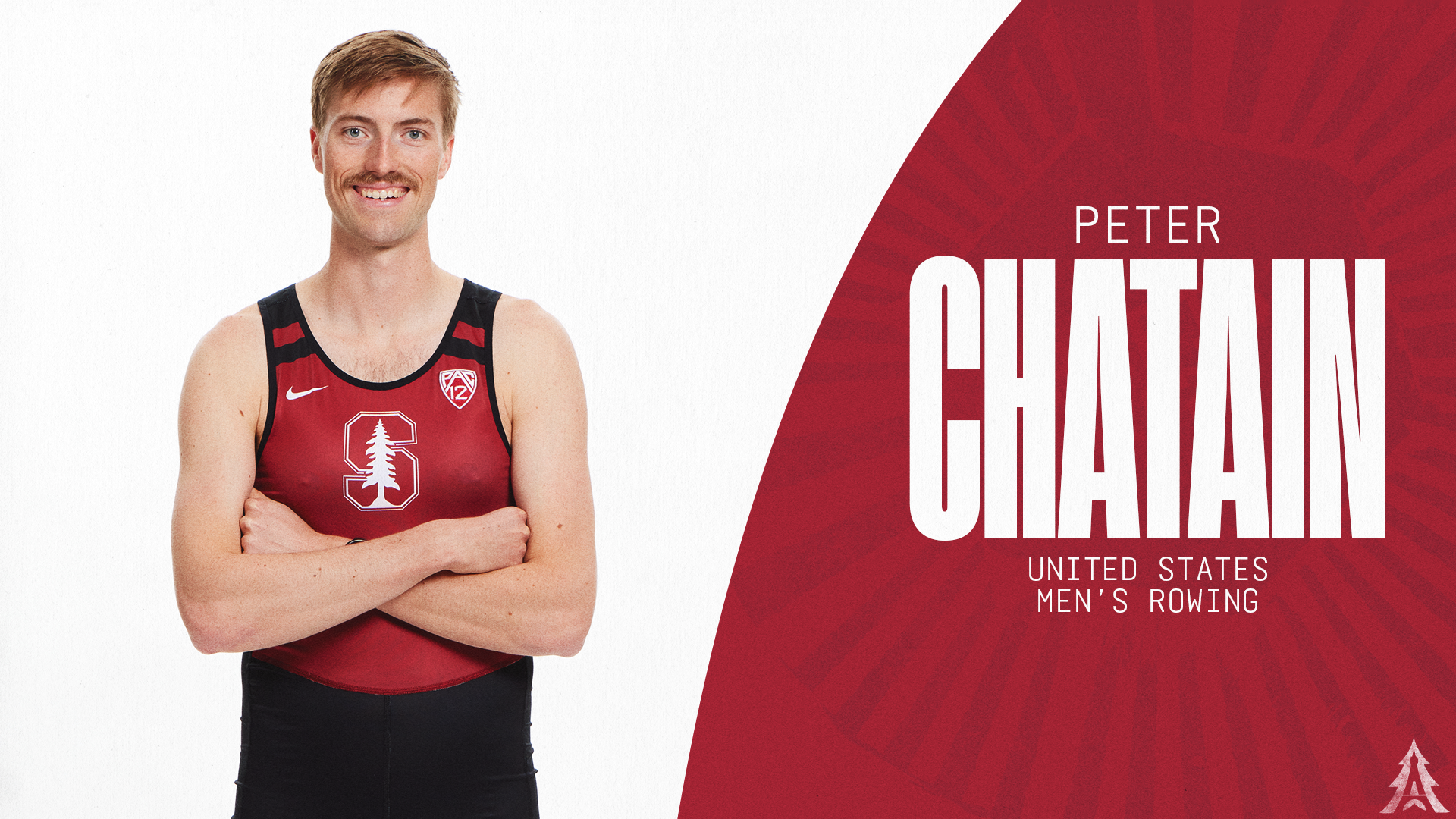
Olympic rower Peter Chatain, a member of the U.S. eights, had a passion for physics long before he took up rowing.
“I saw this as a great way to understand the world,” he said.
As Chatain grew older, his interests evolved too, with an increasing enthusiasm toward artificial intelligence. At Stanford, Chatain found the perfect combination of all three of his academic interests: He majored in math, minored in physics, and co-termed in computer science with a concentration in A.I., particularly ethics.
Such has been his enjoyment of A.I. that Chatain has chosen to delay the conferral of his master’s even though he has completed his degree requirements. By waiting, Chatain has more opportunities to work on research projects with fellow grad students.
Chatain also found Stanford to be the perfect environment to further his rowing. Ted Sobolewski, Stanford’s Farwell Family Director of Men’s Rowing, incorporates two- and four-man boats in training sessions instead of strictly the eights, as many programs stick with.
Chatain recalled one workout in particular that illustrated this concept. It was called a pairs matrix. The team divided into six pairs and raced each other. When it was done, they switched partners and did it again. And again. Six times.
Chatain felt rowing in smaller boats added to his versatility and well-roundedness as a rower that helped him make the national team. Less than a year after his selection, Chatain secured his spot in Paris.
“The main thing was it came down to a few seat races and I did well,” Chatain said. “The coaches were happy with the way I rode and, coming off of Stanford, they were happy with the technique that I had.”
The most common major on the Stanford men’s team is computer science and Chatain, the vice president of Stanford’s Quantum Computing club, found computer science and engineering to be perfect complements to rowing.
“Rowing is very much a grind,” he said. “You have to put in the work to see the results, very similar to engineering. If you put in more effort and are very detail-oriented, you’re going to do better. That’s part of the draw.”
Though Stanford coaches have seen the Olympic possibilities for Chatain since his freshman year, Chatain nearly saw them fade as he suffered through chronic back pain. In class, the pain prevented him from sitting and he was forced to take notes while standing against a windowsill or by lying down.
“It was hurting every single day for basically two years,” Chatain said. “I decided before my fifth year (2023) that if I could get my back healthy during the summer, I’ll go and try to make the national team and the Olympics. But if that doesn’t work, that’s probably the end of rowing for me.”
It worked. Chatain was healthy for his final collegiate season, which provided a springboard to the national team. The Olympic berth was secured in May by winning a qualifying regatta on Lake Lucerne in Switzerland.
“In the actual moment itself, you feel mostly relief,” Chatain said. “Even though you go into it expecting to qualify, you hope nothing goes wrong … It’s fun to have those moments. It’s been a lot of work and a lot of time, but this is what I’ve been training for.”
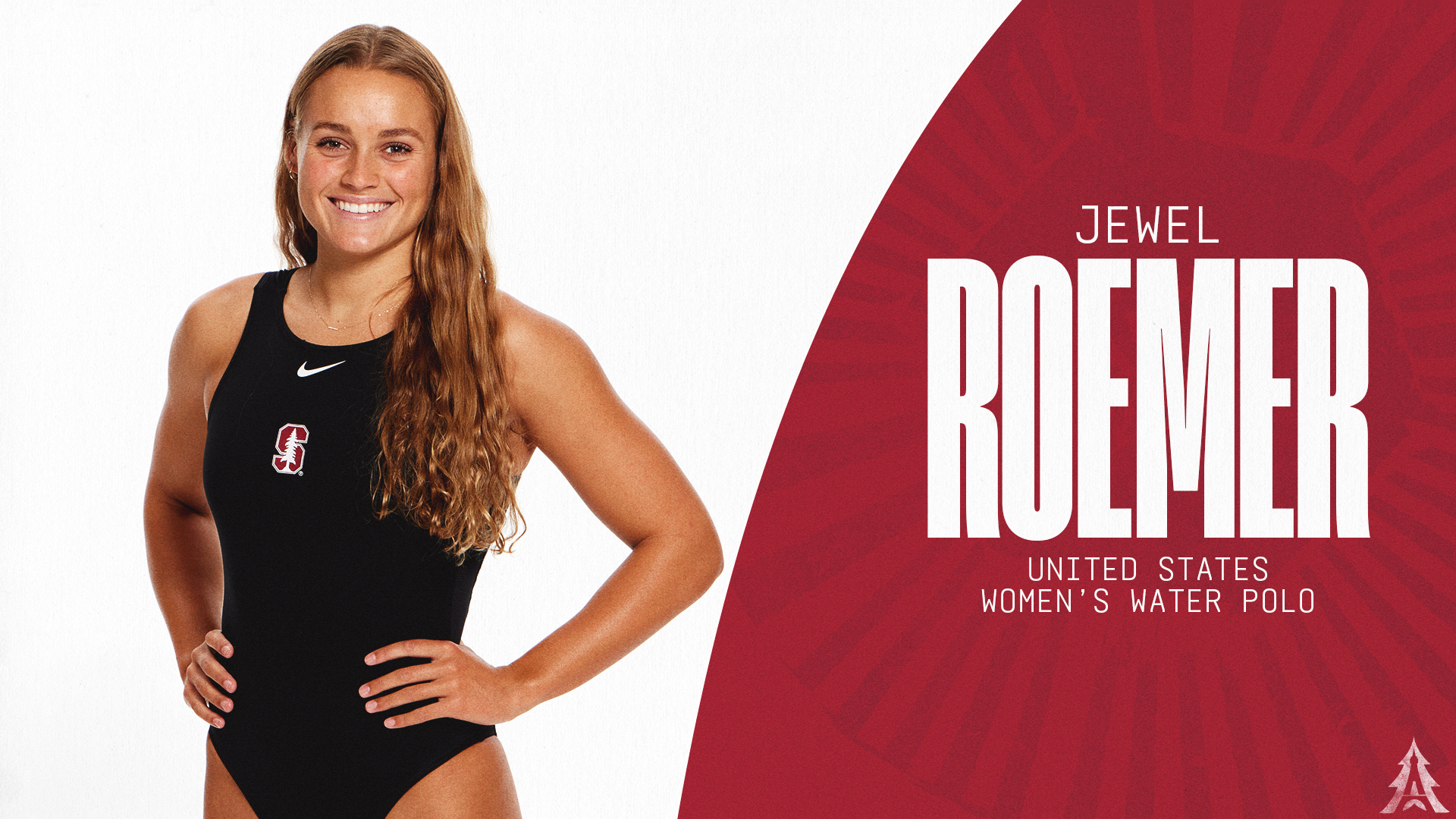
It’s been a while since Jewel Roemer picked up a saxophone. In middle school and high school, the Stanford water polo star loved to try pop songs. With the demands of water polo, however, Roemer has had to shelve the instrument, though music still is integral to who she is.
“Listening to music is always something that can get me through hard times,” she said, wearing a Luke Combs T-shirt from a 2023 Las Vegas concert that “was amazing.”
After she earns her human biology degree and hopefully concludes a long international water polo career, Roemer just may dust off the saxophone.
Meanwhile, Roemer has some work to do, seeking to follow up her 2023 World Championships title with a gold in her first Olympics. She is among 14 Olympians enrolled at Stanford for the 2024-25 academic year. After taking off 2023-24 to prepare for Paris, she’ll be a fifth-year senior seeking her third NCAA title.
Stanford has been integral to her Olympic goals and that was evident even as a recruit when Stanford coaches John Tanner and Susan Ortwein planned for a 2024 Olympic run.
“I always had support from them,” Roemer said. “It all works together, school aspirations and water polo aspirations. Stanford’s a place where you can do both. The push for excellence in everything – there’s no give or take in any area – makes Stanford very special.”
In her freshman season, Stanford missed several players because of Olympic commitments. Their absences actually helped Roemer’s development, forcing her to fill a leadership role and even a different position. Now on the right side, Roemer relied more on her passing and pool vision, while also playing with a measure of freedom.
“That’s something that’s underrated,” Roemer said. “Giving your players freedom to make
mistakes.”
Near the end of her junior season, Roemer tore the labrum in her right shoulder. It was her first serious injury. But as she worked through it, Roemer found a maturity that comes with overcoming obstacles and understanding the importance of doing the little things to take care of her body. Sometimes, it’s the little things that make an Olympian.
As an Olympian, Roemer realizes she will have a platform for life. She’s passionate about helping people, her interest in the health care system being one example. She likes to engage with young fans, she’s volunteered for charity events, such as the Special Olympics, and is eager to serve wherever she can. This aligns with Tanner’s belief that water polo can be a vehicle for good and not just a destination.
“When J.T. talks about our team, he says, ‘Inspire Stanford to inspire the world,’” Roemer said. “With our team and our high goals and achievements, we’re inspiring our own school to inspire the rest of the world. Our team is excellent in its own way and we are making Stanford better. That means Stanford can make the world better.”
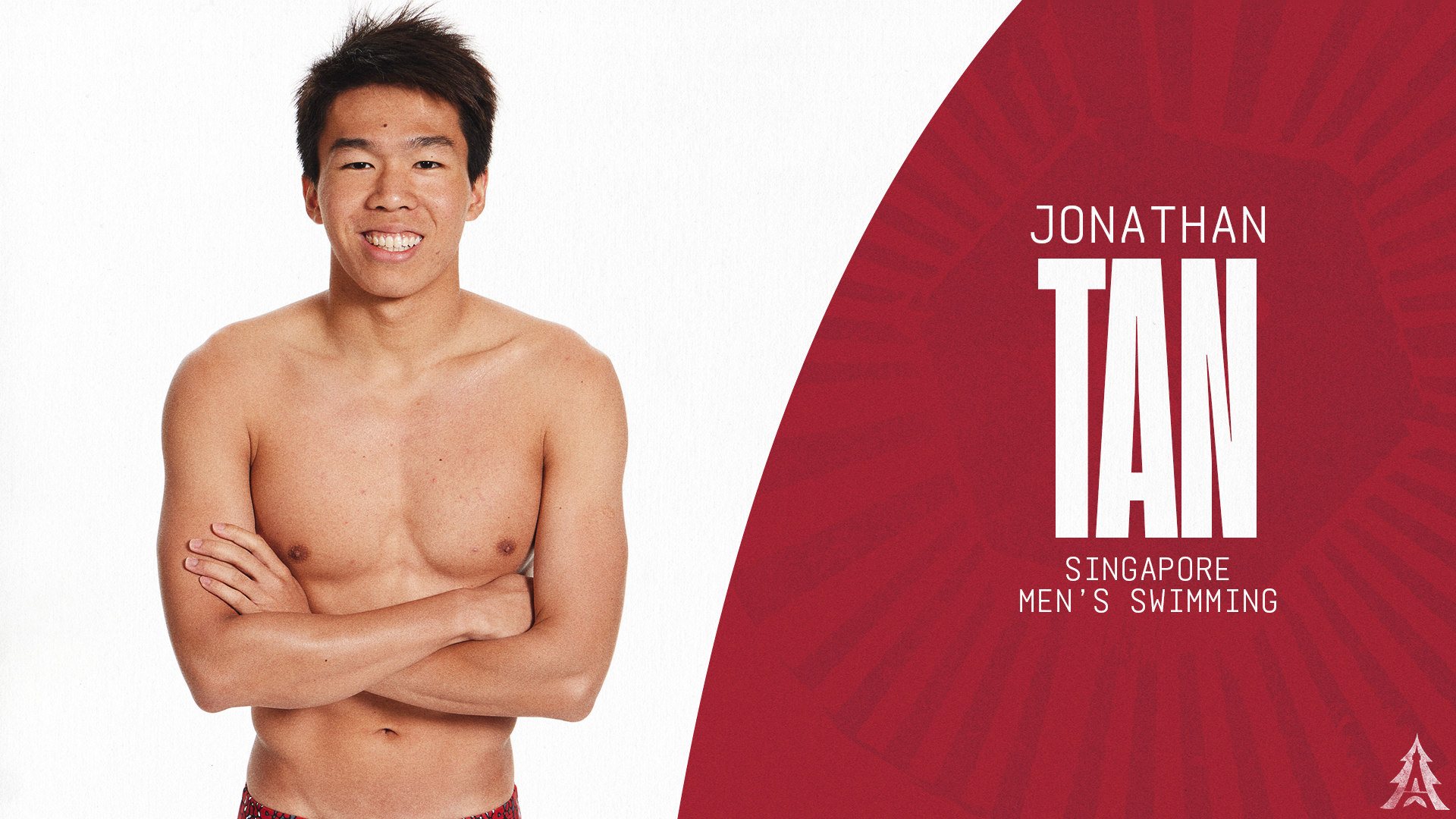
Some of the earliest Olympic memories for Jonathan Tan were watching Michael Phelps dominate in the pool. It didn’t matter what country Phelps was from, Tan, even at a young age, could appreciate greatness.
In Singapore, badminton, table tennis, and sailing are among the primary sports, but swimming took the spotlight in 2016 when Joseph Schooling won the 100-meter butterfly at the Rio Games, giving the island city-state its first gold medal in any sport.
Tan, a rising sophomore at Stanford, has been fueled by that success and by the pride he takes in representing his small southeast Asia nation, where every male citizen of age 18 must serve in the military.
The timing for Tan couldn’t have been worse. His two-year conscription was to begin during a crucial qualifying window for the Tokyo Olympics. Tan was able to delay it for eight months, only to fall short of the Olympic qualifying standard in the 50-meter freestyle by 0.1 seconds.
Tan felt he had wasted that time and that pushing back the beginning of his military service might harm his preparation for Paris in 2024. As it turned out, Tan achieved the 50 free A standard at the 2023 Southeast Asian Games, despite the hardships created by his military service. He will compete in the 50 free and 100 free in Paris as Singapore’s only male swimming competitor.
It wasn’t a conventional path. For the first three months of his national service, Tan underwent basic training on a small island and was able to return to the city to swim only on weekends. Being assigned to the infantry meant more training and an additional four months of limited swimming.
“For those seven months, I lost quite a bit of my touch with the water,” Tan said. “I wasn’t swimming as fast. And, having to go in and out of camp frequently just to train, and not having any days off of physical activity, was pretty tiring.”
His failure to advance to Tokyo hit him “quite hard,” Tan said, but it ultimately helped.
“I had the resolution that I wouldn’t want to be in the same situation again,” he said. “Despite my National Service responsibilities and requirements, I just put my head down. I didn’t want it to affect my swimming.”
Despite a less than optimal situation, Tan has been swimming faster than ever.
“The National Service built my character, my resilience, to keep fighting and keep going,” he said.
Education is valued in Singapore and Tan always planned to come to the U.S. to study and swim. What he found was a fun and energetic training environment at Stanford. The coaching from Dan Schemmel, Stanford’s Goldman Family Director of Men’s Swimming, has allowed Tan to take better advantage of his small stature (5-foot-9, 150 pounds) as he takes on bigger and more powerful competitors.
“I was slow off the blocks and underwater and lost quite a bit of time for the first 15-20 meters,” Tan said. “Dan has helped me correct my start and my speed underwater. Those are the two biggest technical takeaways I’ve gotten since training at Stanford.”
In Paris, Tan hopes to advance out of the heats and set personal bests. His strength is in the final 25 meters. That’s where he usually catches up and can take advantage of his assets as a smaller swimmer, such as less drag and a higher stroke rate.
“I try to focus on things that I’m good at,” Tan said. “Swimming at Stanford has given me a lot more confidence in racing bigger guys. Sitting in the call room and being the smallest one there was a bit intimidating when I was younger.”
He doesn’t feel that way any more.
“The Olympics have always been a big dream of mine,” he said. “It’s something that I’ve wanted since I was a kid. And I’ve worked quite hard to get there.”
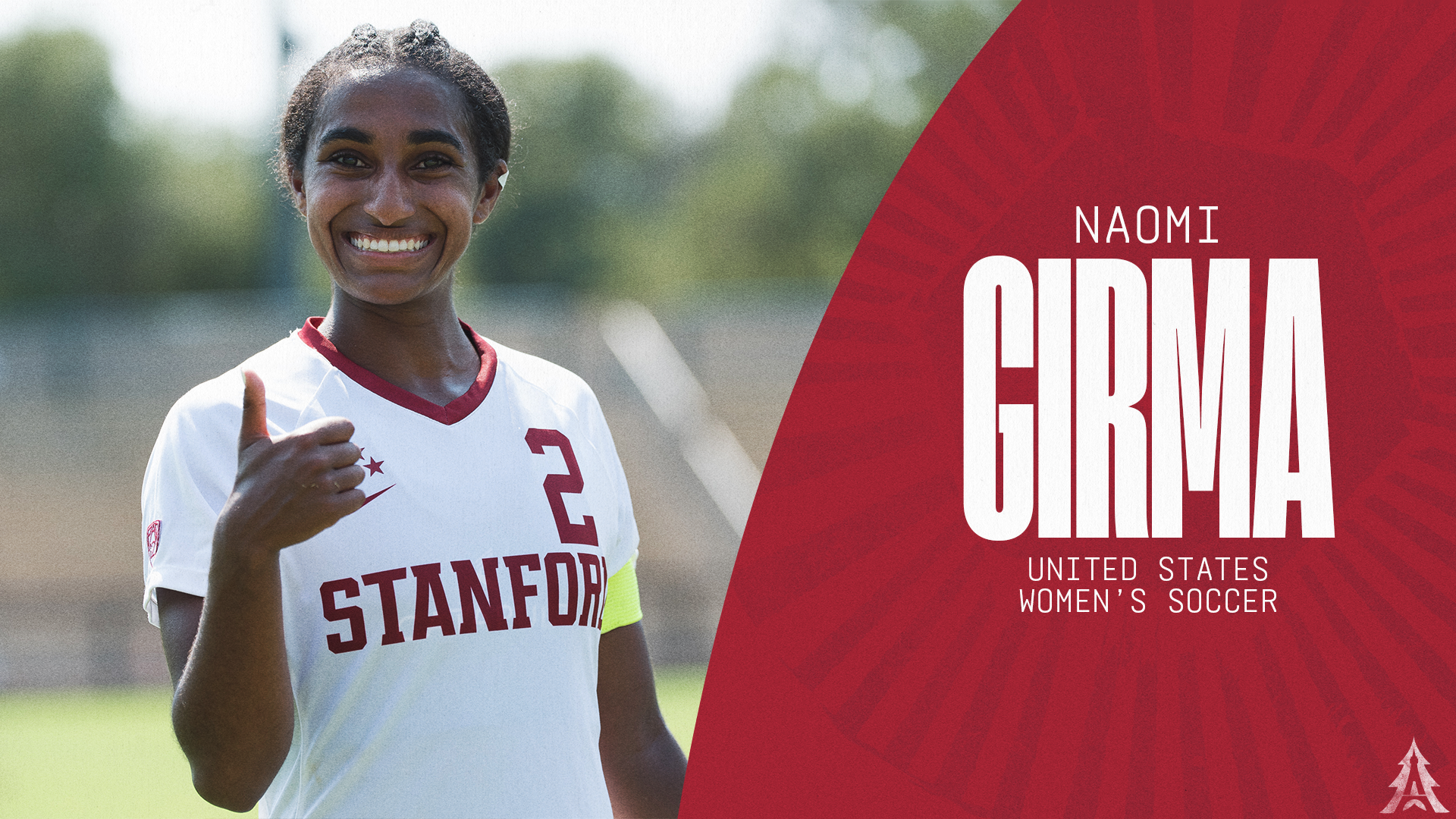
Naomi Girma’s transition from Stanford’s soccer team to the professional and international levels has seemed seamless, though she would dispute that. Nothing comes easy in this game and she said it’s only through criticism and instruction from coaches and teammates that her skills can best shine through.
But it is clear that Girma is a quick study and has established herself, by age 24, as one of the country’s most promising and outstanding players.
She was the No. 1 pick in the 2022 NWSL draft by San Diego Wave FC. She was the league’s Defender of the Year and Rookie of the Year in her first season. And, in 2023, Girma was named U.S. Soccer’s Female Player of the Year, becoming the first defender to win the award.
Beyond individual honors, Girma will work toward the USA’s first global championship since the 2019 World Cup and first Olympic title since the 2012 London Games.
“Coming to Stanford and being surrounded by players like Alana Cook, Tierna Davidson, Madison Haley, Catarina Macario, Sophia Smith … all of those players, especially the ones who were older than me, were the ones setting the standards in training,” Girma said. “Going against them every day, I don’t think there’s a better development for a defender. Training was so intense.”
Smith and Davidson are U.S. Olympic teammates and Macario was on the squad before an injury forced her out of the tournament.
“There was a high standard that I learned and had to maintain,” Girma said. “That stayed with me, even as I went on to training sessions as a pro and with the national team. Learning those habits at a younger age is so important, and learning the value of training at game speed every day allows you to continue getting better.”
The daughter of Ethiopian immigrants Girma Aweke and Seble Demissie, Naomi understands better than most what it means to represent the United States because of her family background. Her father endured a harrowing four-year journey to escape Ethiopia during the Red Terror political repression campaign in the late 1970s that killed more than a million, including many of his close friends. Aweke was likely targeted too because of his role as a youth opposition leader.
“It’s such a big honor for me and my family, because of the so many sacrifices my family made to come to the U.S.,” Naomi said. “This country has embraced us and it’s our home. I know my family feels so proud and I’m just so grateful to be given this opportunity.”
Though Girma is three years removed from wearing a Stanford kit, and five years removed from leading the Cardinal to a national championship in her hometown of San Jose, she still is very connected to The Farm.
Girma is two classes shy of her master’s degree in management science and engineering and is working those off one at a time through Stanford’s part-time remote online option. And, as one of 12 students selected in 2021 as a Mayfield Fellow as part of Stanford’s Technology Ventures Program, Girma studied entrepreneurship to further causes that are closest to her, especially mental health.
Girma and Stanford teammate Katie Meyer were inseparable before Meyer took her own life on March 1, 2022.
“Katie and Stanford are so tied together for me,” Girma said. “I wear ‘KM’ on my wrist with a little tape in every game. I always try to bring her with me to these moments.”
To what form Girma’s involvement takes on isn’t set in stone, but she plans to work toward creating a mental health organization or resource that will help those who are suffering.
“It’s something I wouldn’t want anyone else to go through,” Girma said. “But it’s also something that a lot of athletes go through in different ways. A lot of times, they don’t feel supported. It’s important to help and take action.”
Meanwhile, there’s Paris. Girma has found a home in teammates who feel as strongly as she does about making a difference.
“Something that’s so special about being a part of this team is how much we advocate and fight for things we’re passionate about,” Girma said. “It’s important to always be open about what I believe and to try to make a difference as much as I can using this special privilege that I have, wearing this jersey.”
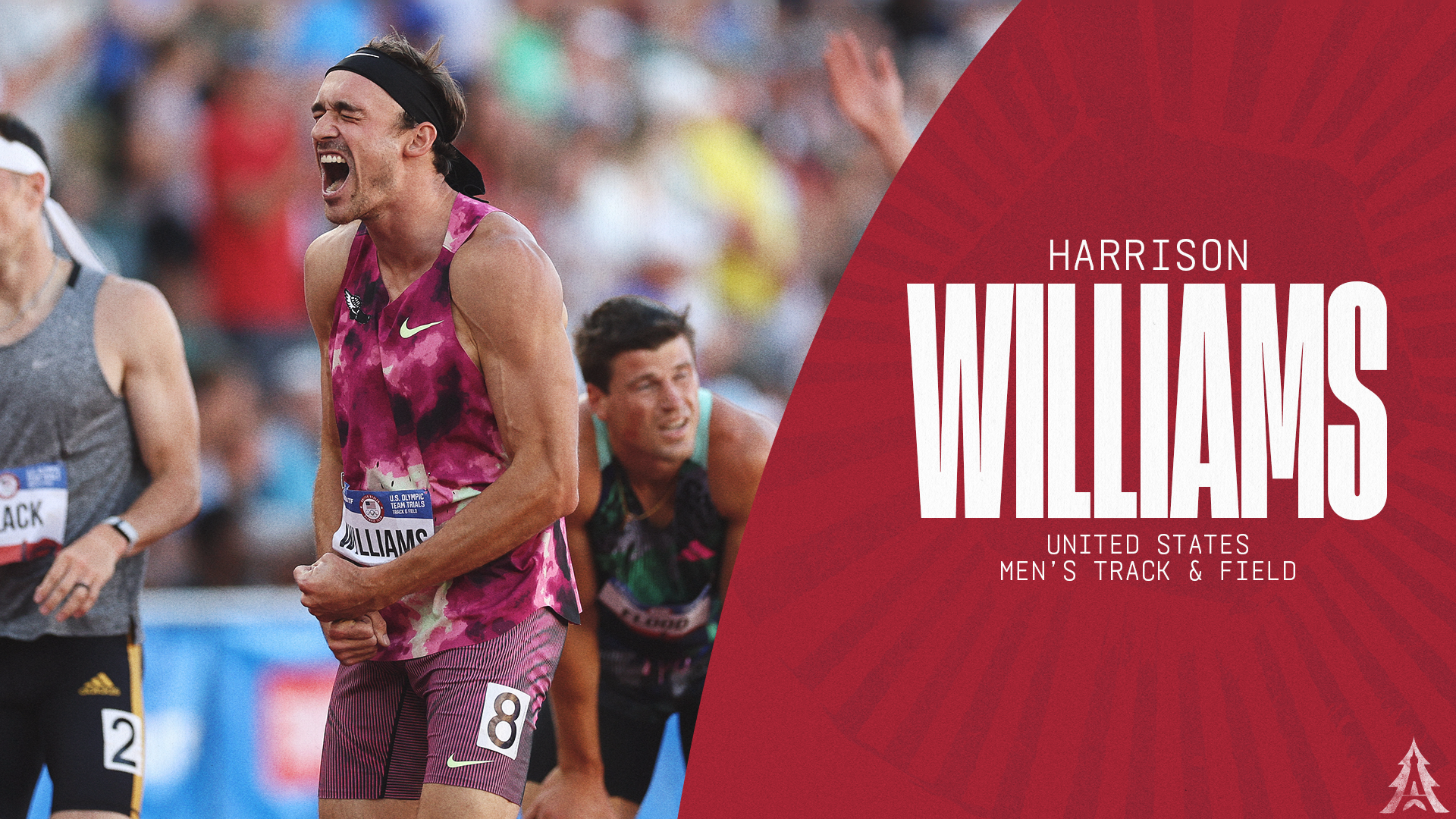
Harrison Williams just finished one of his final training sessions before leaving for Paris and the thing he was most excited about as he reached his San Diego home was the food truck down the street.
“It has the best Greek food I’ve ever had outside of Greece,” Williams said. “I go there 2-3 times a week. Tonight, I decided I was going to go.”
Williams, a decathlete, deserves an indulgence in an event that requires more training hours and has greater physical demands than any other in track and field. The 10-event discipline is so demanding that three competitions a year is about the most any decathlete would dare.
Williams has been doing multi-events for 13 years, winning the seven-event heptathlon title at the 2019 NCAA Indoor Championships for Stanford and earning his first U.S. World Championships decathlon berth that same year.
In a quest to make his first Olympic team, Williams has endured a series of physical setbacks that began when he tore the plantar fascia in his foot during the 2021 Olympic Trials, and still finished fourth.
He missed the 2022 season because of a hip labrum injury that required major surgery, including shaving the bone down to reshape his pelvis.
Williams made a remarkable comeback in winning the U.S. title in 2023 and placing seventh at the World Championships, but 2024 has been hampered by injuries to his ankle, elbow, and groin.
“There were some moments where I wouldn’t say I considered quitting, but I pondered it,” Williams said. “I knew if I quit and moved on, I might have a more stress-free life. But I never really seriously considered quitting. I wanted to become an Olympian.”
The 2024 Olympic Trials came after he was able to assemble a solid five-week block of relatively healthy training, but rust nearly cost him. His poor performance in the high jump on the first day threatened his chances for Paris. After that event, Williams couldn’t help but cry, but encouragement from his father helped get his head straight. Williams responded with a great 400 to close the first day, which got him back on track. On Day Two, he moved up from seventh to capture third and grab the final ticket to Paris.
“You can’t get too emotional in this event,” Williams said. “But the Trials were tough. That was definitely the most emotional and biggest rollercoaster of a meet I’ve ever been in.”
If he’s learned anything in this journey, it’s “trust yourself,” he said. “You’ve got to learn from other people, but, eventually, you’ve got to learn what works best for you. Every athlete is different. I spent a lot of time early in my career trying to copy other people who were better than me and it didn’t always work out.”
Williams was thankful that he had consistency throughout his five years at Stanford with the same multis coach, Michael Eskind, and in training. Stanford never overworked him in meets, and he credited athletic trainer Debbie Iwasaki, among others, for keeping him in one piece.
“Ninety percent of the year is just spent on training, with no one in the stands, no one watching … just alone on the track,” Williams said. “That work ethic of showing up to practice, grinding, going back home and studying, doing homework. It forced me to be disciplined and proactive about training, and that’s remained with me today.”
Majoring in product design, Williams learned principles in the classroom that carried over to the track.
“With 10 events in the decathlon, you have to be very smart in how you train,” Williams said. “You basically have to find shortcuts, figuring out how to get the maximum amount of improvement from a minimum amount of work.
“Product design teaches you to not necessarily take shortcuts, but to find the easiest way to do things so that it’s most effective. That’s what you’re trying do in the decathlon and in designing products for users. That’s been a huge help in my training, trying to think outside the box and think about new ways to improve that hadn’t been thought of before.
“Don’t try the same things. Break things. Figure out if something works. If it doesn’t, cast it aside and do something else. Respect tradition, but don’t be handcuffed by it.”
In Paris, Williams said he’s thankful he doesn’t have the pressure of being a favorite. He doesn’t expect to be among the leaders after the first day, but he’s a pretty good Day Two guy.
“I’m feeling confident,” he said. “I think I can win. I just have to put a good one together.”
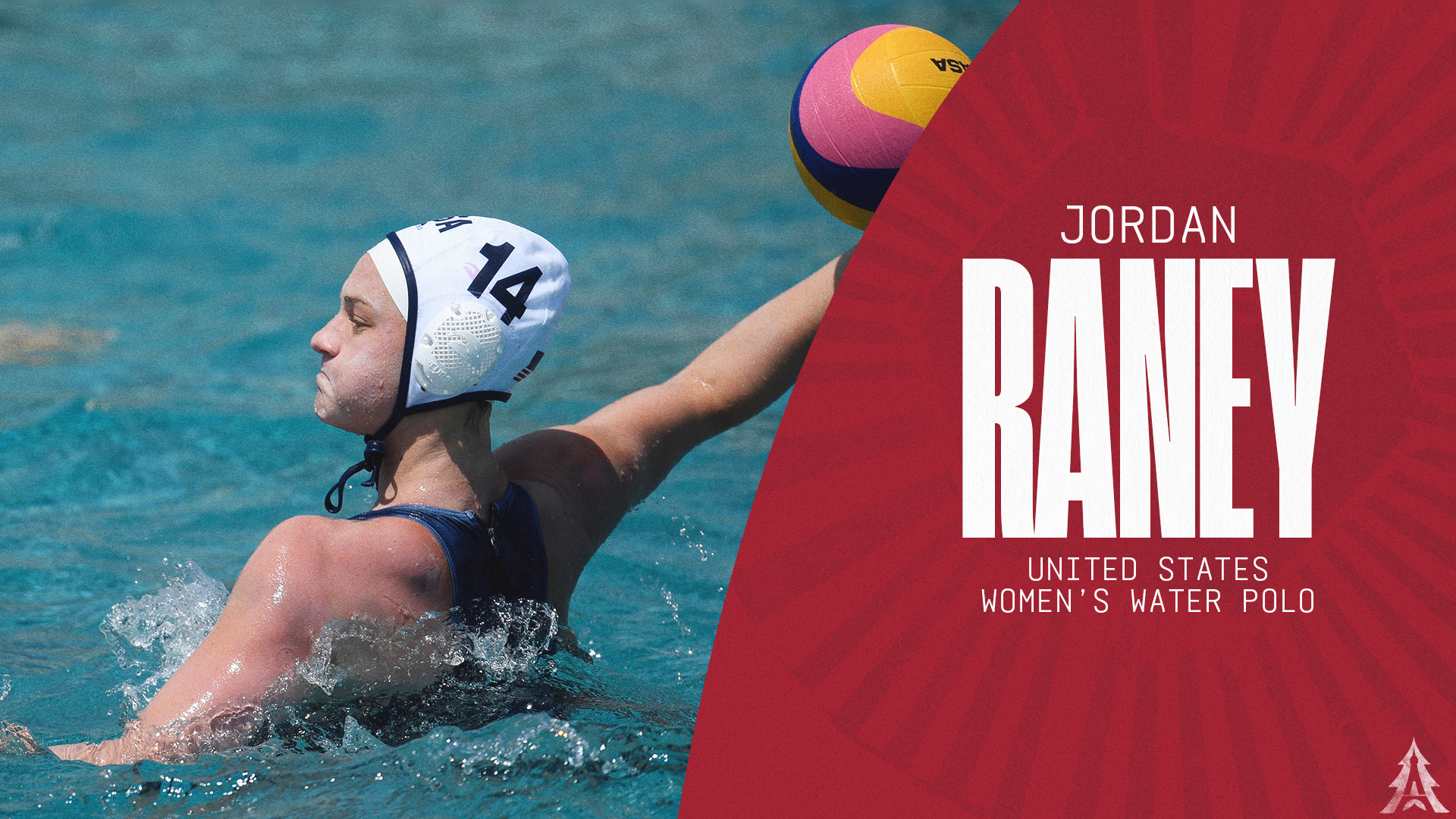
In contrast to being the final Olympic cut in 2021, Jordan Raney expected to be ecstatic when she heard these words in 2024:
“Congratulations! You are an Olympian.”
But upon receiving the news that she was among the 13 to make the U.S. women’s water polo roster for Paris, Raney was relatively devoid of emotion.
“It felt like business as usual,” Raney wrote in her Substack blog.
But three years earlier, Raney remembers feeling her stomach drop to the floor and “then completely blacking out after that,” she wrote. “After I heard the words that solidified my fate, my brain shut off and I don’t remember a word that followed. It was like a death, mourning the loss of a dream.”
Raney wondered if her reaction to Paris had more to do with a feeling of unfinished business – that it wasn’t enough just to make her first Olympic team. She wants to win.
Her Olympic journey truly began with the encouragement of her first water polo coach, Moriah Van Norman, a member of the U.S. team that won silver in Beijing in 2008. Raney had suffered a foot injury playing soccer. She turned to water polo and at age 13 was still was new to the sport.
“You should really consider the Olympics,” Van Norman told her. “I think you have a lot of potential.”
Van Norman “was the one who popped that idea in my head,” Raney said. “That’s where the idea blossomed, and my parents were very supportive. They were all in.”
What would make an expert like Van Norman make a comment like that, which would change a life trajectory?
“I have no clue,” Raney said. “What was the thing? What did she see? I’ve never asked her. But that is something I do wonder.”
Raney crossed off every checklist item in her progression: Winning a Junior World Championships gold, capturing two NCAA titles at Stanford, earning four All-America honors, making the U.S. senior national team in 2017. The Olympics remained the unchecked box.
“I wanted to give it one more go and have no regrets,” Raney said. “I didn’t want to think what it would be like to be 80 and wish I’d tried one more time.”
What role did Stanford play?
“Being 18-22 is such a hard age because I’ve got to do my school work, I’ve got to do water polo, go to class and all that,” Raney said. “I didn’t really appreciate what I had until after I left. But Stanford was such a monumental time in my life, such a special time. Making friends, learning more about myself, time management, and the list goes on.
“I don’t even know where to start or where to end with what it meant to me to go to Stanford.”
Out of the pool, her authentic self involves a lot of coffee and horseback riding – her family annually spends a week at a western Montana dude ranch. Though she’s unsure what her post-water polo life looks like, she knows the impact she would like to have, as capsulated by a quote Raney loves from Maya Angelou:
“I’ve learned that people will forget what you said, people will forget what you did, but people will never forget how you made them feel.”
“That’s the impact I want to make,” Raney said. “I want to make people feel good and valued, whatever that looks like. And I also want to bring a lot of value into the next thing that I do and be freaking good at it.”